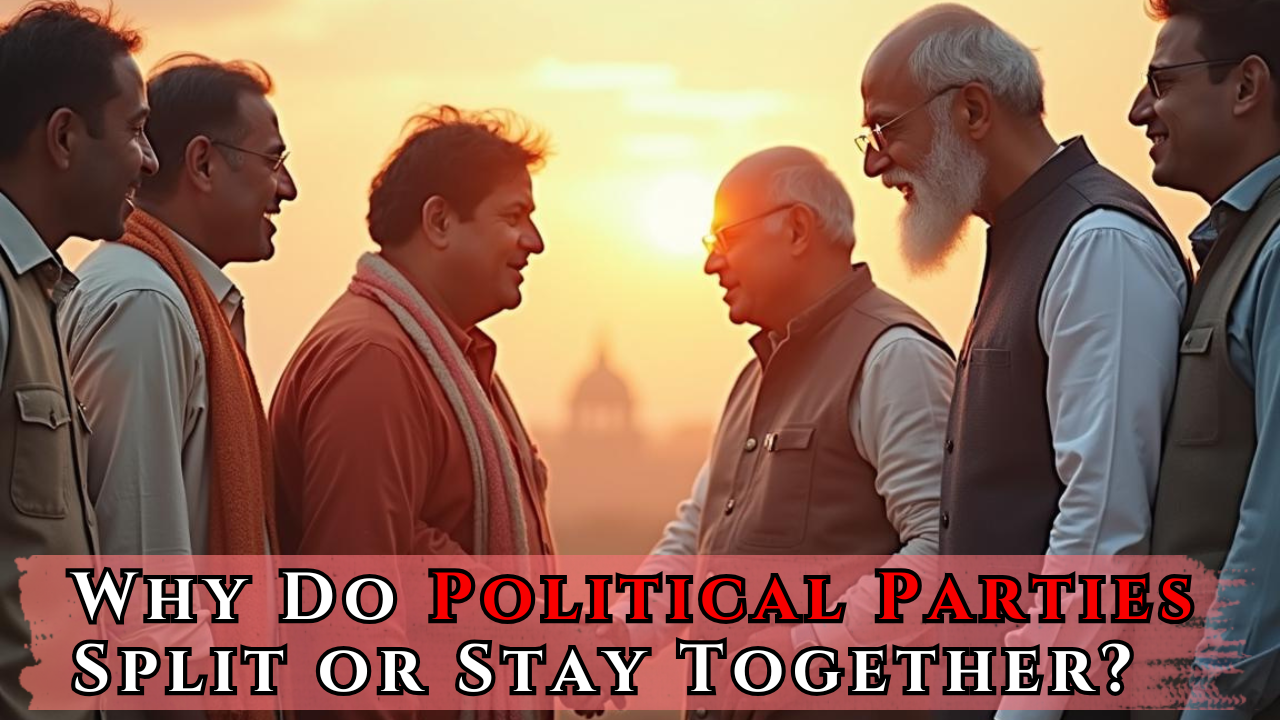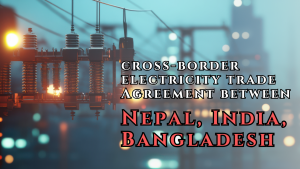Why Do Political Parties Split or Stay Together?
Political parties typically represent a cohesive group of voters, unified by common interests—be it material, regional, community-based, or ideological.
When these interests diverge, it can lead to splits in parties. If there’s space for an additional party in the political landscape, both factions may survive; otherwise, only one endures.
Reasons for Splitting
- Ideological Differences: When factions within a party have diverging beliefs or priorities, this can lead to splits.
- British Parliamentary Example: The Labour Party has experienced splits due to ideological differences. In the 1980s, a centrist faction split off to form the Social Democratic Party, driven by ideological disagreements with the dominant left-wing of the party.
- Indian National Congress (INC): In post-Indira Gandhi India, the Congress party split along ideological and regional lines, giving rise to alternatives like the BJP, Janata Dal, and regional parties, each representing distinct ideological and caste-based aspirations.
- South Africa’s ANC: Jacob Zuma’s breakaway faction emerged due to ideological rifts, with his populist agenda diverging from the official ANC’s more moderate and pro-business factions.
- Leadership Conflicts: Disagreements over leadership styles or the direction of the party can result in splits.
- Japan’s LDP: Leadership contests within the LDP are often fiercely competitive, but instead of causing the party to split, these conflicts have been contained within a factional system.
- INC in India: Leadership battles post-Indira Gandhi led to the eventual split, with factional leaders forming new parties.
- Electoral Strategy: Parties may split in response to electoral pressures. For instance, if a party is performing poorly in elections, factions may believe they can achieve better results by forming a new party that better aligns with voter preferences.
- British Parliamentary Example: Centrist factions in Labour split, hoping to appeal to a broader voter base through the creation of the Social Democratic Party. However, their electoral strategy didn’t succeed long-term, forcing them to merge with the Liberals to form the Liberal Democrats.
- Personal Ambitions: Individual ambitions of prominent leaders can lead to splits.
- South Africa’s ANC: Jacob Zuma’s personal ambition to maintain power and influence led to the creation of a breakaway party, challenging the ANC’s leadership.
- External Pressures: Changes in the political landscape, such as shifts in public opinion or new social movements, can create rifts within parties.
- INC in India: The rise of regional and caste-based movements and the growing appeal of Hindu nationalism (represented by the BJP) pressured the Congress party to split, as factions could no longer address the diverse needs of their voter base.
- South Africa’s ANC: Regional and ethnic pressures, including the growing power of ethnic Zulu parties and other regional actors, challenge the ANC’s dominance.
Laws in India
In India, the rules governing the merger and split of political parties are primarily outlined in the Tenth Schedule of the Constitution, which was introduced by the 52nd Amendment Act in 1985. This schedule includes provisions related to disqualification on grounds of defection and the conditions under which mergers and splits can occur.
Merger of Political Parties
- Definition and Conditions: A political party can merge with another party if at least two-thirds of its members in the legislature agree to the merger.
- Protection from Disqualification: Members who agree to the merger are protected from disqualification under the anti-defection law, meaning they can join the new party without facing penalties for leaving their original party.
- Formation of New Parties: If members do not accept the merger, they can opt to function as a separate group, which will then be recognised as their political party for legislative purposes.
Split of Political Parties
- Historical Context: Prior to the 91st Amendment in 2003, a split within a political party could occur if one-third of its members decided to leave. However, this provision was often misused for political manoeuvring.
- Current Provisions: The amendment removed the provision for splits, meaning that splits are no longer recognised under the anti-defection law. Only mergers are allowed under specific conditions.
Reasons for Staying Together
- Shared Ideology: A strong ideological foundation can help maintain unity among party members.
- Japan’s LDP: Despite factional differences, the LDP’s ideological coherence and dominance have kept it unified. No faction has fully broken away to form a viable independent party, as they share a broad right-wing orientation.
- Electoral Success: The prospect of winning elections often encourages parties to remain united.
- Ireland’s Fianna Fáil and Fine Gael: Both centre-right parties have stayed together due to their sustained electoral success, even though their ideological differences are minimal. Their unity has historically guaranteed political dominance.
- Japan’s LDP: The LDP’s electoral success has prevented splits, as the party has dominated Japanese politics for decades, providing little incentive for factions to break away.
- Institutional Loyalty: Many politicians have strong ties to their party’s history and structure.
- British Parliamentary Example: Despite splits, some Labour members have remained loyal to the institutional history of the party, ensuring that the main party continues to survive through ideological shifts.
- Coalition Building: In multi-party systems, parties often form coalitions to enhance their electoral strength and governance capabilities.
- South Africa’s ANC: While facing internal divisions, the ANC has maintained unity through coalition-building efforts with regional parties and different ethnic groups, thus avoiding major splits.
- INC in India (Pre-split): Before its eventual splits, the Congress Party managed to hold together various ideological factions and regional leaders through coalition-building.
- Voter Expectations: Parties are often mindful of voter expectations regarding stability and continuity.
- Ireland’s Fianna Fáil and Fine Gael: Despite minimal differences, voters in Ireland have continued to support the stability offered by these two major parties, delaying the rise of significant alternatives until recently.
- Japan’s LDP: The LDP has remained unified because voters expect continuity and stability from the party, even as factional differences persist.
Subscribe to our Youtube Channel for more Valuable Content – TheStudyias
Download the App to Subscribe to our Courses – Thestudyias
The Source’s Authority and Ownership of the Article is Claimed By THE STUDY IAS BY MANIKANT SINGH





